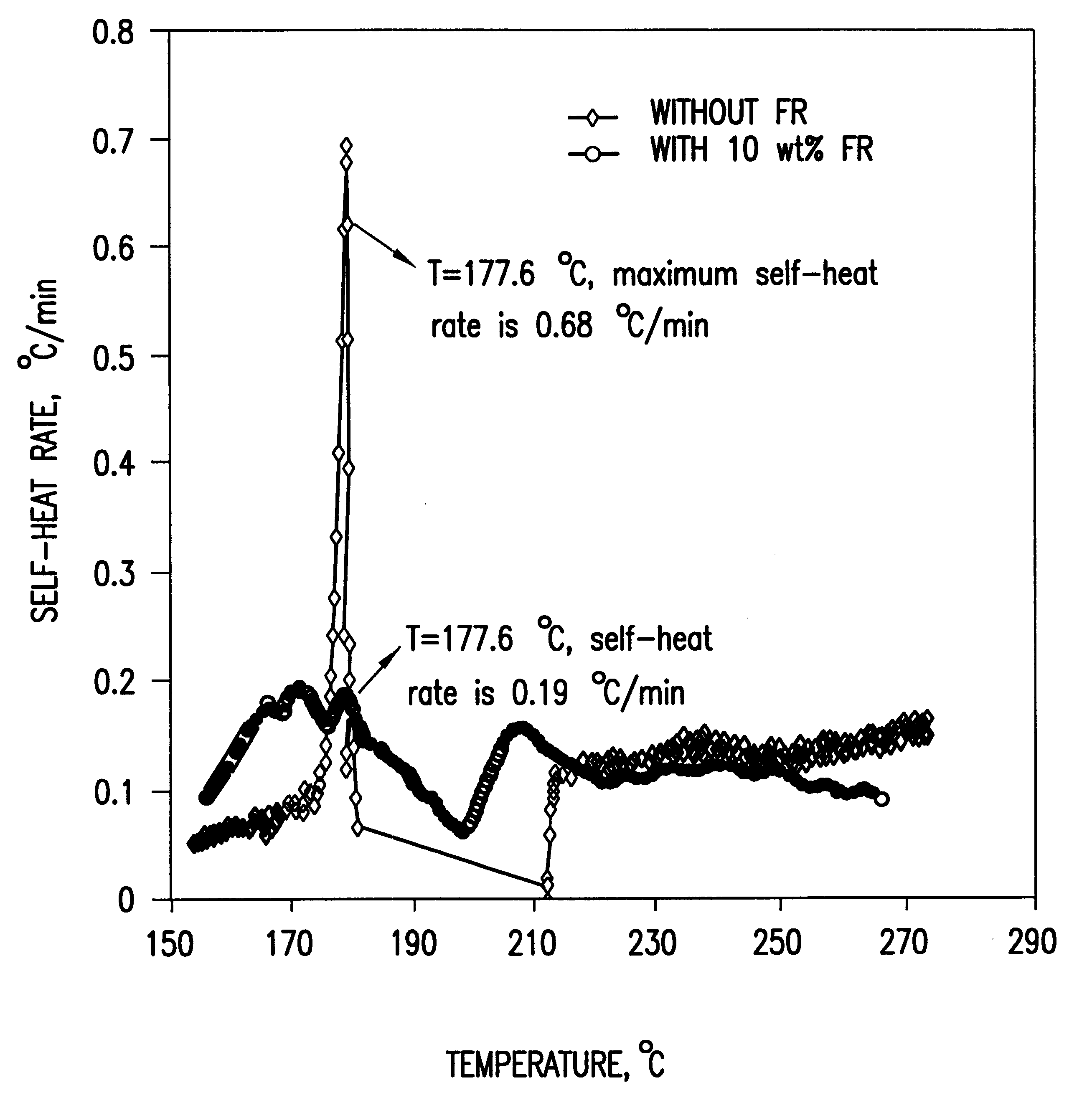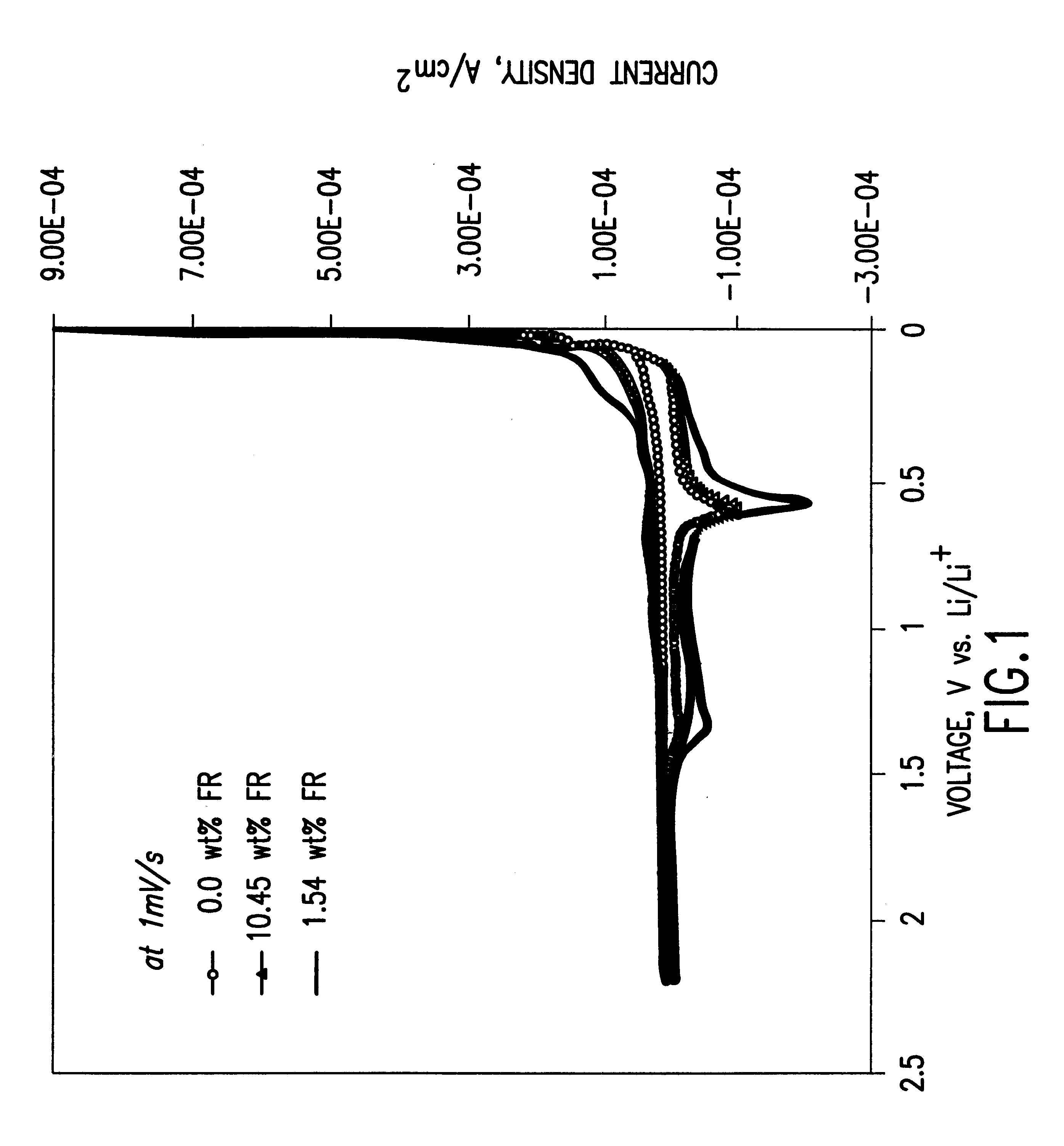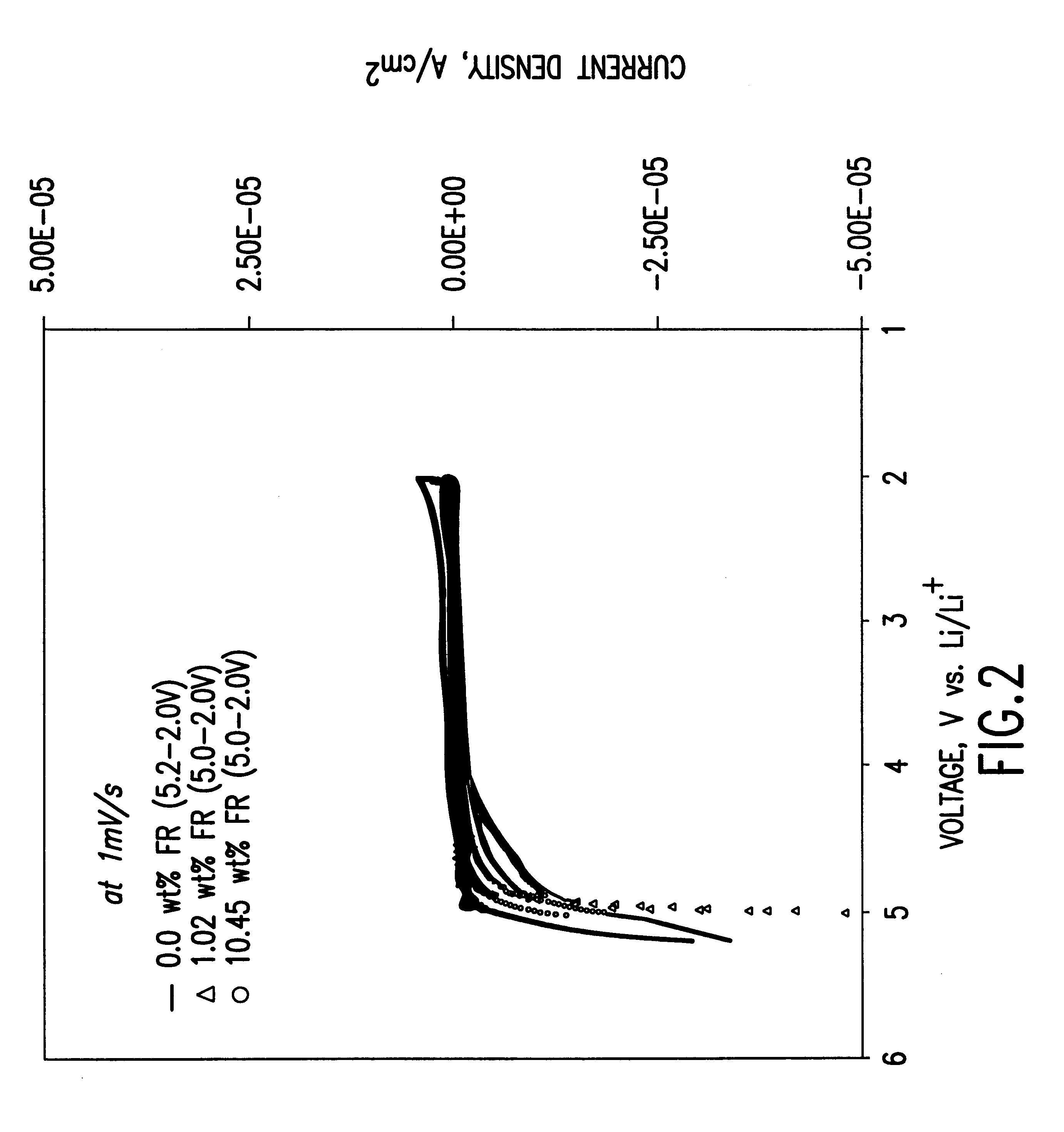Flame-retardant additive for li-ion batteries
a technology of additives and li-ion batteries, applied in the direction of secondary cells, cell components, non-aqueous electrolyte cells, etc., can solve the problems of lithium-ion batteries that cannot meet the full utilization of lithium-ion batteries in electric vehicle applications, lithium-ion cells are thermally runaway, and abuse, normal operating conditions,
- Summary
- Abstract
- Description
- Claims
- Application Information
AI Technical Summary
Benefits of technology
Problems solved by technology
Method used
Image
Examples
Embodiment Construction
The lithium-ion battery of this invention comprises an anode electrode, a cathode electrode, and a non-aqueous solvent lithium electrolyte. A flame-retardant additive comprising at least one cyclophosphazene is disposed in the non-aqueous solvent lithium electrolyte. In accordance with one preferred embodiment of this invention, the flame-retardant additive comprises greater than about 1.0% by weight of said electrolyte, preferably in the range of about 1.0% to about 15% by weight of said electrolyte.
To demonstrate the concept of this invention, the electrochemical and thermal properties of non-aqueous electrolytes containing a flame-retardant additive (hexamethoxycyclotriphosphazene[NP(OCH.sub.3).sub.2 ].sub.3) were measured using a potentiostat, cycler and accelerating rate calorimeter. The flame-retardant additive was synthesized by reacting sodium methoxide (NaOCH.sub.3) and hexachlorocyclotriphosphazene (NPCl.sub.2).sub.3 The electrochemical stability of the electrolyte was det...
PUM
| Property | Measurement | Unit |
|---|---|---|
| weight percent ratio | aaaaa | aaaaa |
| cutoff voltage | aaaaa | aaaaa |
| cutoff voltage | aaaaa | aaaaa |
Abstract
Description
Claims
Application Information
 Login to View More
Login to View More - R&D
- Intellectual Property
- Life Sciences
- Materials
- Tech Scout
- Unparalleled Data Quality
- Higher Quality Content
- 60% Fewer Hallucinations
Browse by: Latest US Patents, China's latest patents, Technical Efficacy Thesaurus, Application Domain, Technology Topic, Popular Technical Reports.
© 2025 PatSnap. All rights reserved.Legal|Privacy policy|Modern Slavery Act Transparency Statement|Sitemap|About US| Contact US: help@patsnap.com



